Abstract
The pharmacokinetics of AM-833 [6,8-difluoro-1-(2-fluoroethyl)-1, 4-dihydro-7-(4-methyl-1-piperazinyl)-4-oxo-3-quinolinecarboxylic acid] were studied in mice, rats, rabbits, dogs, and monkeys by reversed-phase high-performance liquid chromatography. AM-833 was rapidly and completely absorbed from the digestive tracts of mice, rats, and dogs. About half of AM-833 bound to rat and dog serum proteins. Drug levels in lung, spleen, liver, and kidney tissues of rats and dogs were greater than the respective levels in serum but lower in brain tissue. Drug levels in tissues declined with the decrease in levels in serum. AM-833 penetrated rapidly and well into inflammatory exudate of rats. Elimination half-lives in serum were species dependent, ranging from 1.57 h in rabbits to 9.42 h in dogs. Profiles of drug levels in serum were dose related over a single dose range from 2 to 40 mg/kg and not modified significantly during multiple dosing in dogs. Unchanged AM-833 was excreted in urine and bile in both rats and dogs. The metabolism of AM-833 was suggested by evidence that 24-h total recovery of unchanged AM-833 in urine and bile accounted for about half of the intravenous dose in rats.
Full text
PDF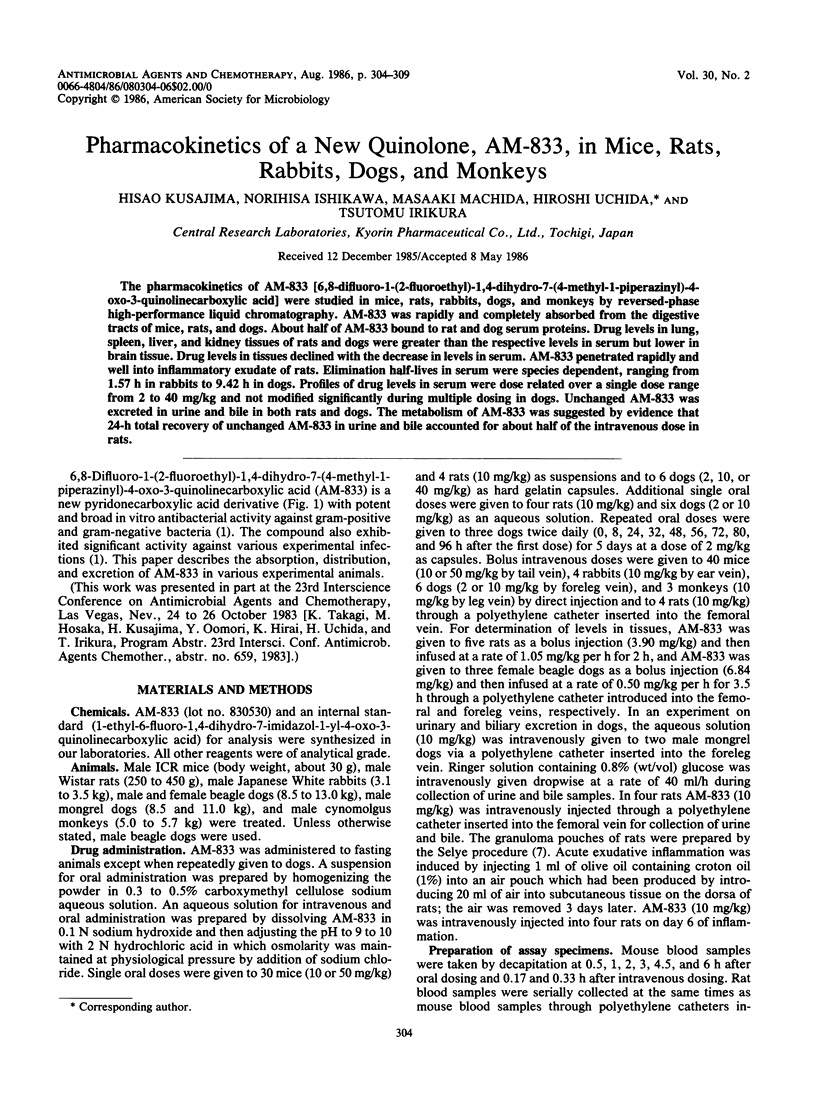

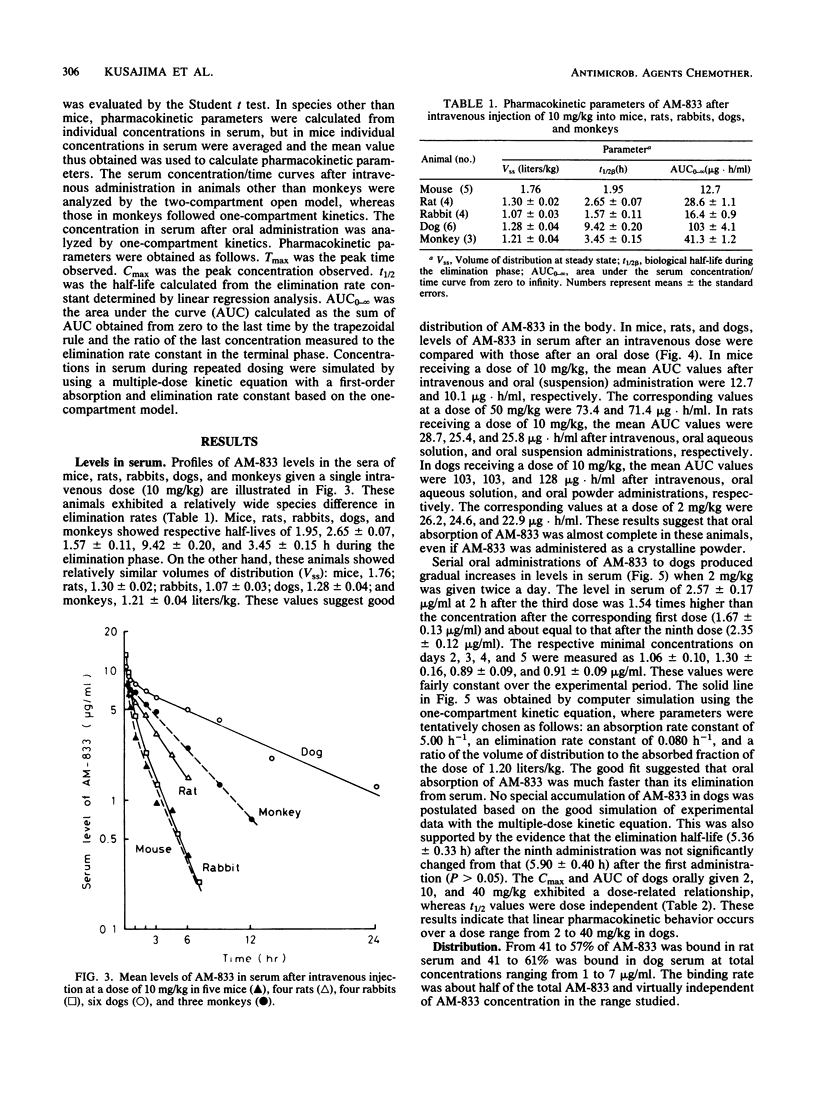
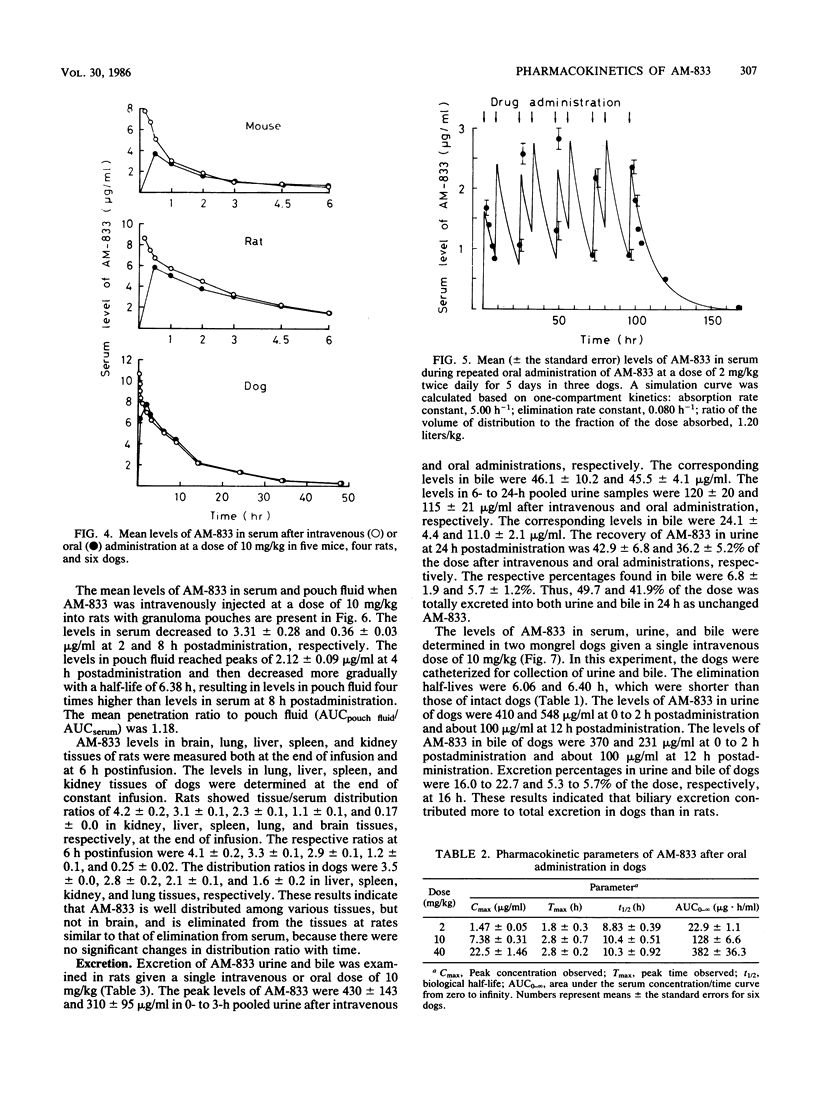
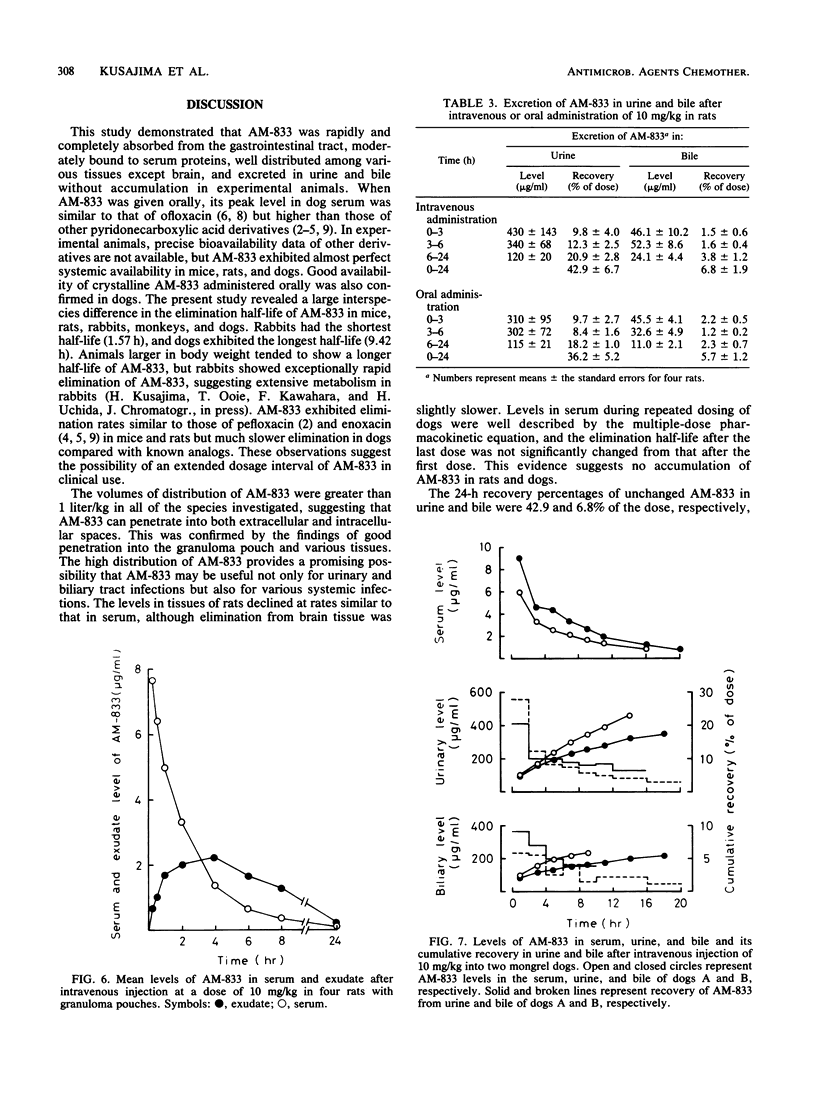
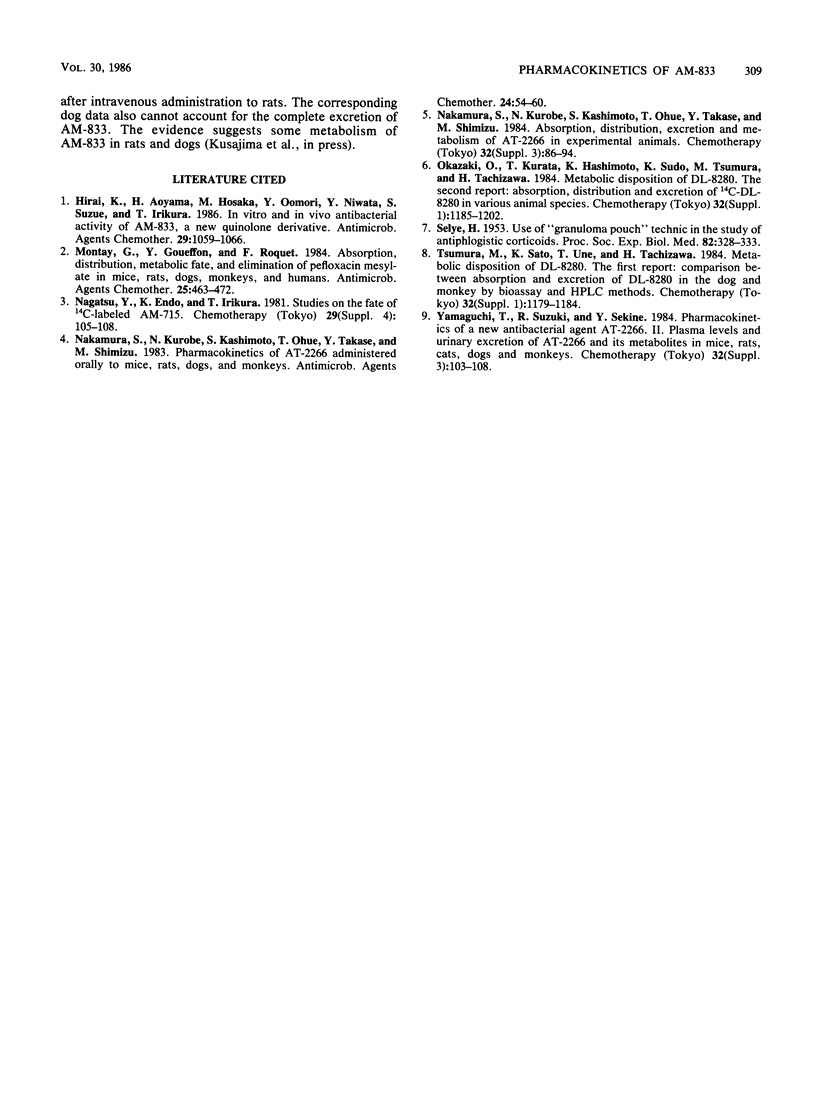
Selected References
These references are in PubMed. This may not be the complete list of references from this article.
- Hirai K., Aoyama H., Hosaka M., Oomori Y., Niwata Y., Suzue S., Irikura T. In vitro and in vivo antibacterial activity of AM-833, a new quinolone derivative. Antimicrob Agents Chemother. 1986 Jun;29(6):1059–1066. doi: 10.1128/aac.29.6.1059. [DOI] [PMC free article] [PubMed] [Google Scholar]
- Montay G., Goueffon Y., Roquet F. Absorption, distribution, metabolic fate, and elimination of pefloxacin mesylate in mice, rats, dogs, monkeys, and humans. Antimicrob Agents Chemother. 1984 Apr;25(4):463–472. doi: 10.1128/aac.25.4.463. [DOI] [PMC free article] [PubMed] [Google Scholar]
- Nakamura S., Kurobe N., Kashimoto S., Ohue T., Takase Y., Shimizu M. Pharmacokinetics of AT-2266 administered orally to mice, rats, dogs, and monkeys. Antimicrob Agents Chemother. 1983 Jul;24(1):54–60. doi: 10.1128/aac.24.1.54. [DOI] [PMC free article] [PubMed] [Google Scholar]
- SELYE H. Use of granuloma pouch technic in the study of antiphlogistic corticoids. Proc Soc Exp Biol Med. 1953 Feb;82(2):328–333. doi: 10.3181/00379727-82-20108. [DOI] [PubMed] [Google Scholar]


